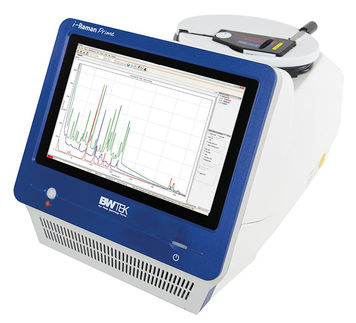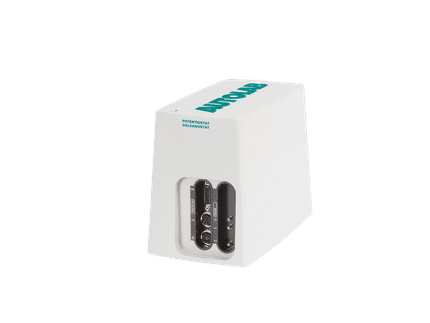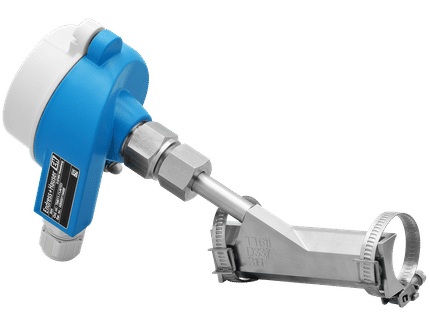| angiotensin II receptor, type 1
|
| Identifiers
|
| Symbol
| AGTR1
|
| Alt. Symbols
| AGTR1B
|
| Entrez
| 185
|
| HUGO
| 336
|
| OMIM
| 106165
|
| RefSeq
| NM_000685
|
| UniProt
| P30556
|
| Other data
|
| Locus
| Chr. 3 q21-q25
|
| angiotensin II receptor, type 2
|
| Identifiers
|
| Symbol
| AGTR2
|
| Entrez
| 186
|
| HUGO
| 338
|
| OMIM
| 300034
|
| RefSeq
| NM_000686
|
| UniProt
| P50052
|
| Other data
|
| Locus
| Chr. X q22-q23
|
The angiotensin receptors are a class of G protein-coupled receptors with angiotensins as ligands.[1] They are important in the renin-angiotensin system: they are responsible for the signal transduction of the main effector hormone.[2]
Structure
The AT1 and AT2 receptors share a sequence identity of ~30%, but have a similar affinity for angiotensin II, which is their main ligand.
Members
Overview table
| Receptor
| Mechanism [3]
|
| AT1 |
|
| AT2 |
|
| AT3 |
|
| AT4 |
|
AT1
Main article: Angiotensin II receptor type 1
The AT1 receptor is the best elucidated angiotensin receptor.
Mechanism
It is activated by angiotensin II. It is coupled to Gq/11 and Gi/o and thus activates phospholipase C and increases the cytosolic Ca2+ level, which itself performs cellular mechanisms, as well as activating protein kinase C It also inhibits adenylate cyclase and activate various tyrosine kinases.[2]
Effects
Effects mediated by the AT1 receptor include vasoconstriction, aldosterone synthesis and secretion, increased vasopressin secretion, cardiac hypertrophy, augmentation of peripheral noradrenergic activity, vascular smooth muscle cells proliferation, decreased renal blood flow, renal renin inhibition, renal tubular sodium reuptake, modulation of central sympathetic nervous system activity, cardiac contractility, central osmocontrol and extracellular matrix formation.[4]
AT2
AT2 receptors are more plentiful in the fetus and neonate. Effects mediated by the AT2 receptor include inhibition of cell growth, fetal tissue development, modulation of extracellular matrix, neuronal regeneration, apoptosis, cellular differentiation and maybe vasodilation.
AT3 and AT4
Other poorly characterized subtypes include the AT3 and AT4 receptors. The AT4 receptor is activated by the angiotensin II metabolite angiotensin IV, and may play a role in regulation of the CNS extracellular matrix.
See also
References
- ^ de Gasparo M, Catt KJ, Inagami T, Wright JW, Unger T (2000). "International union of pharmacology. XXIII. The angiotensin II receptors". Pharmacol. Rev. 52 (3): 415–72. PMID 10977869.
- ^ a b Higuchi S, Ohtsu H, Suzuki H, Shirai H, Frank GD, Eguchi S (2007). "Angiotensin II signal transduction through the AT1 receptor: novel insights into mechanisms and pathophysiology". Clin. Sci. 112 (8): 417–28. doi:10.1042/CS20060342. PMID 17346243.
- ^ Unless else specified in box, then ref is: Senselab
- ^ Catt KJ, Mendelsohn FA, Millan MA, Aguilera G (1984). "The role of angiotensin II receptors in vascular regulation". J. Cardiovasc. Pharmacol. 6 Suppl 4: S575–86. PMID 6083400.
| Transmembrane receptor: G protein-coupled receptors |
|---|
| Class A: Rhodopsin like | Acetylcholine (M1, M2, M3, M4, M5) - Adrenergic (α1 (A, B, D), α2 (A, B, C), β1, β2, β3) - Adrenomedullin - Anaphylatoxin (C3a, C5a) - Angiotensin (1, 2) - Apelin - Bile acid - Bombesin (BRS3, GRPR, NMBR) - Bradykinin (B1, B2) - Cannabinoid (CB1, CB2) - Chemokine - Cholecystokinin (A, B) - Dopamine (D1, D2, D3, D4, D5) - Eicosanoid (CysLT (1, 2), LTB4 (1, 2), FPRL1, OXE, Prostaglandin ((DP (1, 2), EP (1, 2, 3, 4), PGF, Prostacyclin, Thromboxane) - EBI2 - Endothelin (A, B) - Estrogen - Formyl peptide (1, L1, L2) - Free fatty acid (1, 2, 3, 4) - FSH - Galanin (1, 2, 3) - Gonadotropin-releasing hormone (1, 2) - GPR (1, 3, 4, 6, 12, 15, 17, 18, 19, 20, 21, 22, 23, 25, 26, 27, 31, 32, 33, 34, 35, 37, 39, 42, 44, 45, 50, 52, 55, 61, 62, 63, 65, 68, 75, 77, 78, 79, 82, 83, 84, 85, 87, 88, 92, 101, 103, 119, 120, 132, 135, 139, 141, 142, 146, 148, 149, 150, 151, 152, 153, 160, 161, 162, 171, 172, 173, 174, 176, 182) - Ghrelin - Histamine (H1, H2, H3, H4) - Kisspeptin - Luteinizing hormone/choriogonadotropin - Lysophospholipid (1, 2, 3, 4, 5, 6, 7, 8) - MAS (1, 1L, D, E, F, G, X1, X2, X3, X4) - Melanocortin (1, 2, 3, 4, 5) - MCHR (1, 2) - Melatonin (1A, 1B)- Motilin - neuromedin (B, U (1, 2)) - Neuropeptide (B/W (1, 2), FF (1, 2), S, Y (1, 2, 4, 5)) - Neurotensin (1, 2) - Opioid (Delta, Kappa, Mu, Nociceptin, but not Sigma) - Olfactory - Opsin (3, 4, 5, 1LW, 1MW, 1SW, RGR, RRH) - Orexin (1, 2) - Oxytocin - Oxoglutarate - PAF - Prokineticin (1, 2) - Prolactin-releasing peptide - Protease-activated (1, 2, 3, 4) - Purinergics (Adenosine (A1, A2a, A2b, A3), P2Y, (1, 2, 4, 5, 6, 8, 9, 10, 11, 12, 13, 14)) - Relaxin (1, 2, 3, 4) - Somatostatin (1, 2, 3, 4, 5) - Serotonin, all but 5-HT3 (5-HT1 (A, B, D, E, F), 5-HT2 (A, B, C), 5-HT (4, 5A, 6, 7)) - SREB - Succinate - TAAR (1, 2, 3, 5, 6, 8, 9) - Tachykinin (1, 2, 3) - Thyrotropin - Thyrotropin-releasing hormone - Urotensin-II - Vasopressin (1A, 1B, 2) |
|---|
| Class B: Secretin like | Brain-specific angiogenesis inhibitor (1, 2, 3) - Cadherin (1, 2, 3) - Calcitonin - CD97 - Corticotropin-releasing hormone (1, 2) - EMR (1, 2, 3) - Glucagon (GR, GIPR, GLP1R, GLP2R) - Growth hormone releasing hormone - PACAPR1- GPR (56, 64, 97, 98, 110, 111, 112, 113, 114, 115, 116, 123, 124, 125, 126, 128, 133, 143, 144, 157) - Latrophilin (1, 2, 3, ELTD1) - Parathyroid hormone (1, 2) - Secretin - Vasoactive intestinal peptide (1, 2) |
|---|
| Class C: Metabotropic glutamate / pheromone | Calcium-sensing receptor - GABA B (1, 2) - Glutamate receptor (Metabotropic glutamate (1, 2, 3, 4, 5, 6, 7, 8)) - GPRC6A - GPR (156, 158, 179) - RAIG (1, 2, 3, 4) - Taste receptors (TAS1R (1, 2, 3) TAS2R (1, 3, 4, 5, 8, 9, 10, 12, 13, 14, 16, 38, 39, 40, 41, 43, 44, 45, 46, 47, 48, 49, 50)) |
|---|
| Frizzled / Smoothened | Frizzled (1, 2, 3, 4, 5, 6, 7, 8, 9, 10) - Smoothened |
|---|
|







